Space Park is a set collection game where players race around a rondelle to collect different space gems. Those gems are then traded in for Badges worth points and the first player to reach 20 points is the winner.
Given this simple premise, is Space Park even worth considering?
Setup
The rondelle is made up of seven different modular sections. The longest of these, Starlight Station, is always placed to the far left. The other six, smaller sections are shuffled and laid out randomly to the right, three along the upper edge and three along the lower edge.
Place the different crystals at the edge of the three matching locations—the red Sun crystals by Cosmic Canyon, the green Sea crystals by Celestial Seas, and the purple Moon crystals by Lunar Woods. Then take the Explorer Point tokens and place them next to Fusion Falls. Take the Fast Travel passes and place them next to Astral Arcade. Finally, place the Controller and the Scout on the Astral Arcade tile itself.
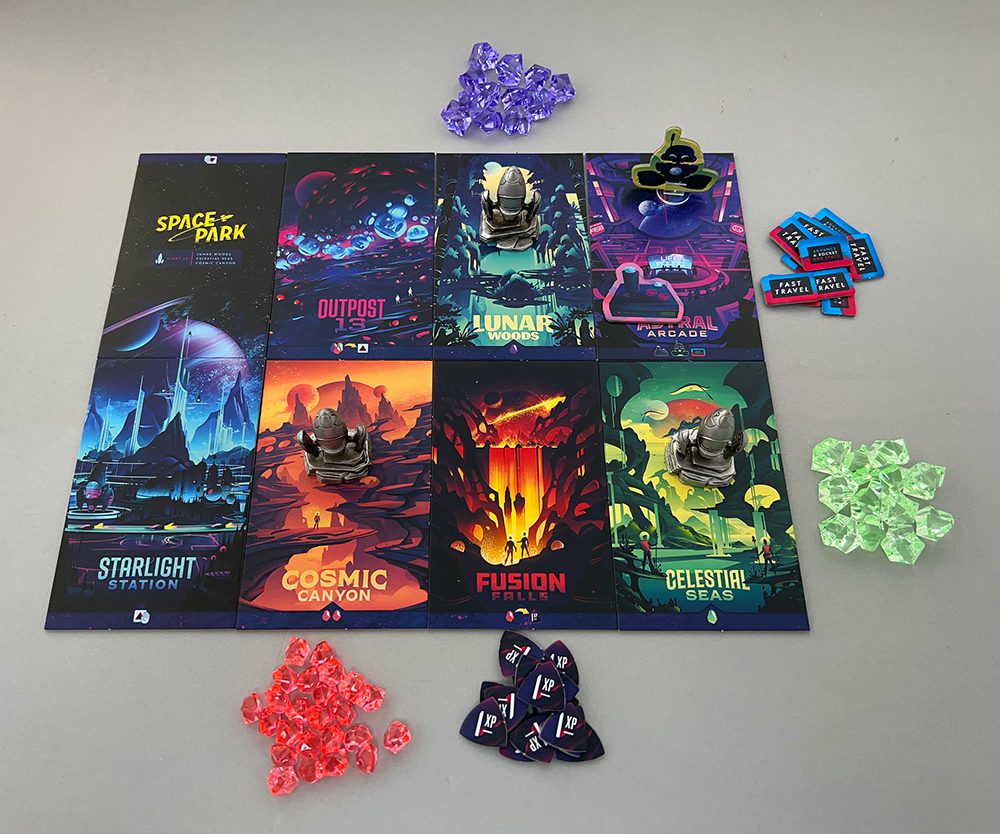
Shuffle the Badge deck and deal one card face down to each player, then place the top three Badges face up next to the deck. Give each player one Sun crystal to start.

Take the three rocket ships and place one on each of the three tiles with the crystals next to them.
Choose a starting player and you’re ready to play the game.
Playing the Game
Moves in Space Park take place in a clockwise path around the rondelle of seven different destinations. Players choose a tile with a rocket on it, take the corresponding action, then move the rocket to the next available destination tile. (If another rocket is already on the destination tile next to the tile just played, skip the occupied tile(s) until you come to the next open destination.)
You’ll be looking to collect crystals from their destination tiles in order to fulfill the requirements listed on the Badges. Then, once collected, you’ll want to go to Outpost 13 where you can return those crystals to their destination tiles to play the Badge in front of you. This not only grants you the points listed on the Badge, but also any special powers listed at the bottom of the Badge.
Along the way, you’ll need to acquire new Badges, and this is done at Starlight Station. Start by drawing the top Badge from the deck and taking it into your hand. You can either choose to keep it or take one of the face-up Badges next to the deck. If you take a face-up Badge, replace it with the one you just drew from the deck.
Taking the actions at Celestial Seas and Lunar Woods will get you a single crystal (Sea or Moon, respectively). Taking the Cosmic Canyon action will get you two Sun crystals. If you decide you have a surplus of Sun crystals, you can take the action at Fusion Falls and trade one Sun crystal for 1 VP.
The last destination is Astral Arcade. Here you’ll gain the Controller and a single Fast Travel pass. This allows you to move Scout, the Space Park robot, to a different destination on the rondelle. Now, whenever anyone takes the action at the destination where Scout is, you’ll gain your choice of either a Sun crystal or a Fast Travel pass.
Fast Travel passes are your key to moving one of the rockets to a different destination at the start of your turn. For each Fast Travel pass you choose to use, you can move a rocket over that many destinations. If, for example, you wanted to take the action at Outpost 13 and trade in crystals for a badge in your hand, but the nearest rocket is two destinations away, you could trade in two Fast Travel passes to move that rocket to Outpost 13. You’d take the Outpost 13 action to claim the Badge, then move the rocket to the next available destination.
The first player to reach 20 VP triggers the end of the game. Each player takes their final turn in the round, so each player gets the same number of turns in the game. VPs are then totaled for all players and the one with the most VP wins.
Thoughts
If Space Park sounds fairly simple, that’s because it is. There’s no hidden depth to the game and with the seven destinations, there’s a limited amount of interesting decisions you’ll be making throughout the game.
This isn’t necessarily a bad thing. My gaming group likes our heavier, crunchier games, but then we also like to finish the evening off with something lighter. For a long time, Splendor has been our go-to game, but Azul has crept in as we have started meeting in person again. I have a feeling that Space Park may be joining that list. It’s easy to set up, easy to dive right into, and plays fairly quickly. Even better, there’s never a time when anyone feels like they’re out of the running to win.
I do need to mention the gorgeous artwork by Brian Edward Miller. The box art looks like a 1950s comic book cover and that aesthetic carries on to the destination tiles as well.
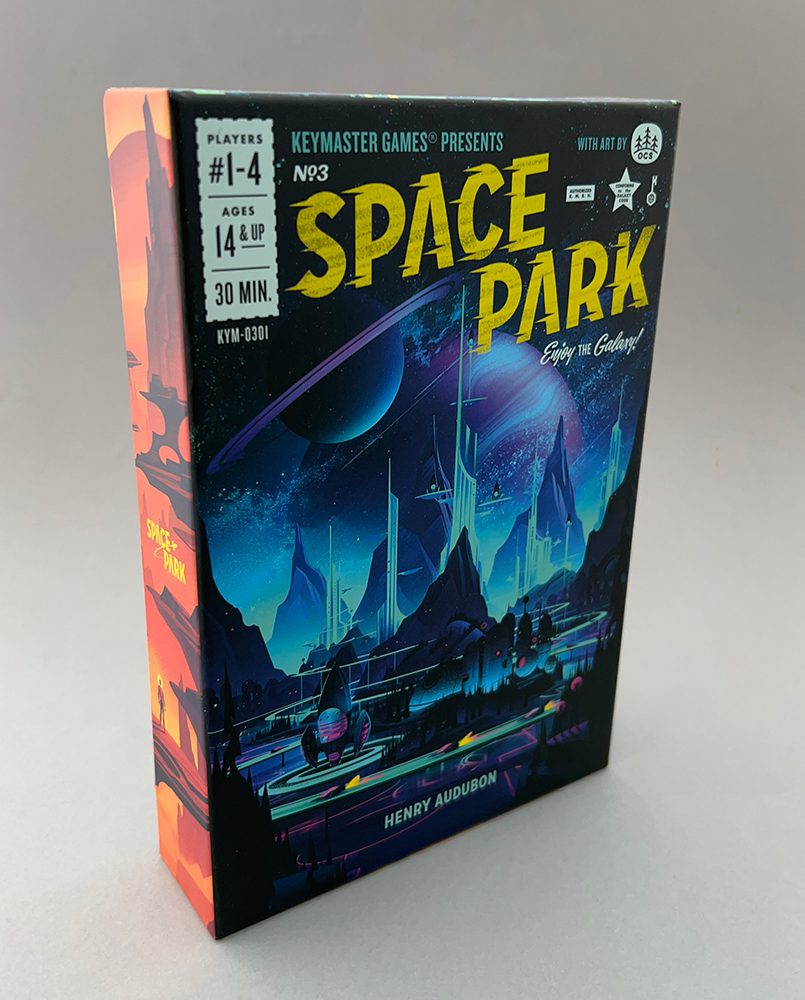
The rockets have a nice weight to them and the silver paint has been accented with black outlines. They’re very nice to play with.
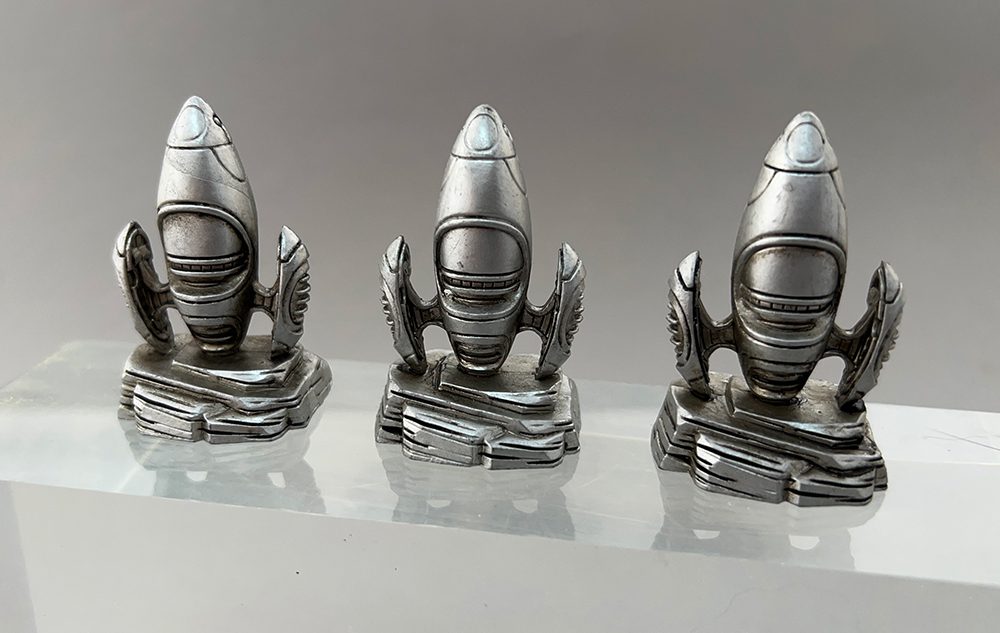
Given the attention paid to the rockets, it’s odd that Scout is a cardboard punch-out mounted on a plastic stand. His 2-D Wall-E appearance is a disappointment in an otherwise fun little game.
If you’re looking for a simple filler game or a sci-fi themed game to play with the whole family, give Space Park a try.
But Wait–There’s a Solo Game!
My thanks to fellow Meeple Mountaineer Ian Howard for urging me to check out the solo mode. The set up is the same, but in the single-player game, you’re in a race to score 20 points. After each turn, you turn over a Badge and move Scout to the destination indicated by the icon in the lower right corner. In order to take a rocket action on that tile, you either have to pay a Sun crystal or turn over the controller. If Scout is already at that destination, all rockets move one space clockwise.
There are 27 Badge cards in the deck. Three get turned face-up during setup, and you get one as a starting Badge. This leaves only 24 turns to get to Starlight Station enough times to gain the remaining Badges necessary to score those points, collect all the necessary crystals, and make it to Outpost 13 often enough to pay for them.
The solo mode is a challenging little puzzle that caught me off guard. I expected an easy time of it, but after quickly losing my first two games, I gained a respect for it. It will go into my regular solo game rotation.


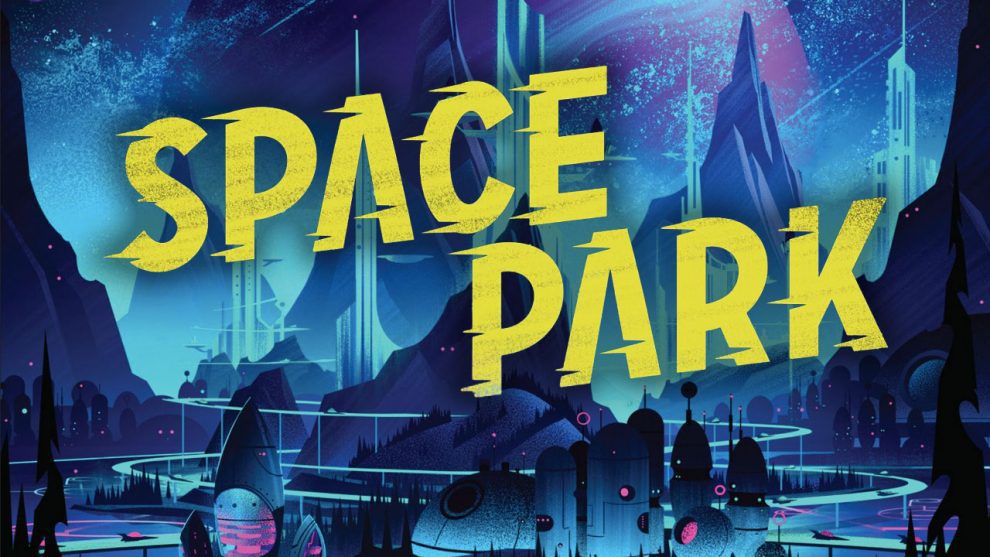
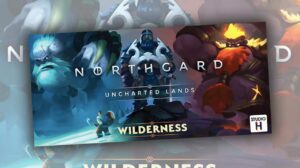
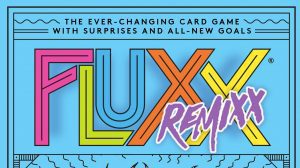
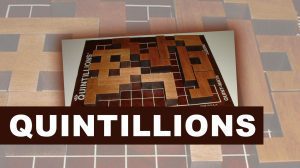





Add Comment